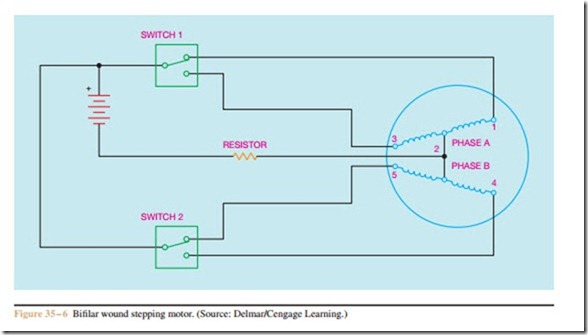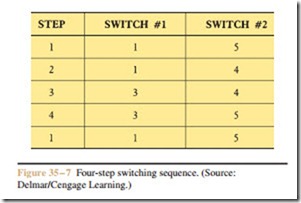Four-Step Switching (Full Stepping)
The switching arrangement shown in Figure 35 – 6 can be used for a four-step sequence. Each time one of the switches changes position, the rotor will advance one- fourth of a tooth. After four steps, the rotor has turned the angular rotation of one “full” tooth. If the rotor and stator have fifty teeth, it will require 200 steps for the motor to rotate one full revolution. This corresponds to an angular rotation of 1.8 degree per step. (360°/200 steps = 1.8° per step.) Figure 35 – 7 illustrates the switch positions for each step.
Related posts:
Basic Logic Gates:Nor Gate
Locating a Grounded Interpole with AC and a Clamp-on Ammeter
CONVENTIONAL D.C. MOTORS:MOTIONAL E.M.F.
VARIABLE-SPEED DRIVES:INVERTERS
current:current Flow
Feedback Control Theory Continued:Steady State Error
Fixed Appliance and Socket Circuits:Connections Units
Switch mechanisms:Contact conigurations and actions
Synchronous Motors
INDUCTION MOTORS:INDUCTION MOTOR TORQUE-SPEED CHARACTERISTICS
Stepping Motors
Introduction to Actuators Based on Electro-Rheological Fluid
The Control Transformer
MOTOR TYPES AND LINE DIAGRAMS

